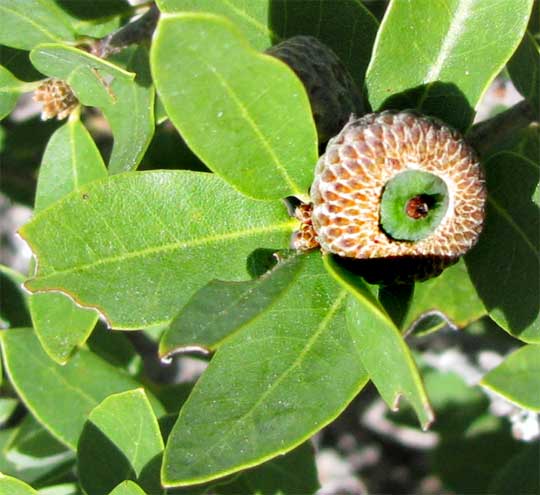Excerpts from Jim Conrad's
Naturalist Newsletter

from the the July 26, 2009 Newsletter, describing a backpacking trip on the Pacific Crest National Scenic Trail in Red Buttes Wilderness Area, Siskiyou County, California:
HUCKLEBERRY OAK
It was fascinating how the vegetation changed drastically depending on geology. Sometimes we'd emerge from a cool, shadowy conifer forest and walk directly into a hot, dazzlingly bright "barren" occupied by naked rock and/or low, dense thickets, with no clear reasons for the change other than a different kind of bedrock appearing. You can see our first such barren with spotty, waist-high thickets above.
The thickets are composed of yet another bushy oak, this species needing bright sunlight. You can see this second oak species' tough, evergreen, brittle leaves and penny-size, not-quite-mature acorns below:
 .
.
This is the Huckleberry Oak, QUERCUS VACCINIFOLIA, more widely distributed than the Sadler Oak, but still restricted only to extreme southwest Oregon, northern California and a tiny bit of Nevada. You might enjoy seeing a map showing its distribution.
Both the Sadler and Huckleberry Oaks provide browse for the area's abundant Black-tailed Deer as well as for Black Bear, various rodents, Blue Grouse, Mountain Quail and other birds.
Huckleberry Oaks also fall into the White Oak group, with acorns maturing in one year. Living where any rooted plant might be damaged from dislodged boulders and fire, Huckleberry oak sprouts from the root crown when its top is destroyed. When low brush extends over a large area it's referred to as chaparral. Huckleberry Oak is an important, often dominant, member of mountain chaparral, but not of chaparral at lower elevations.